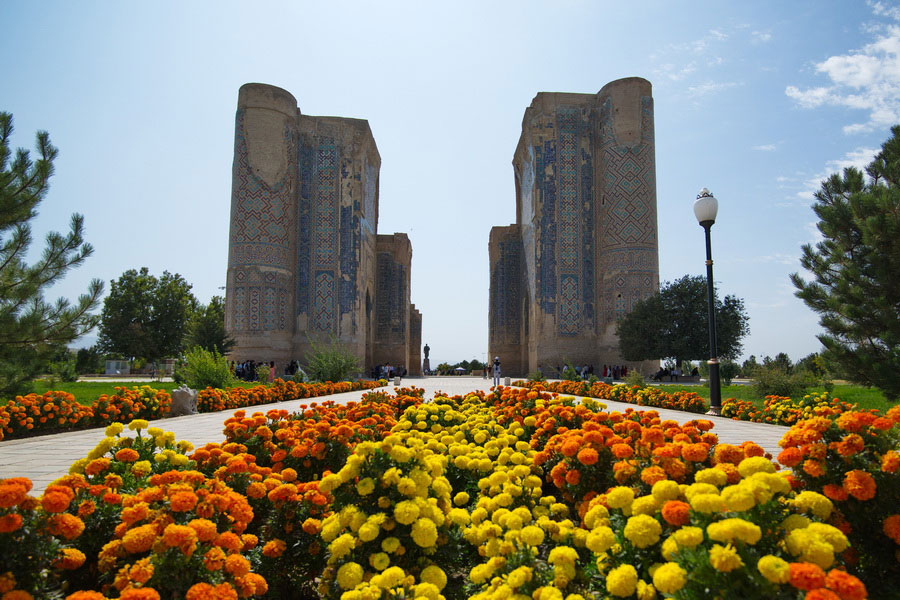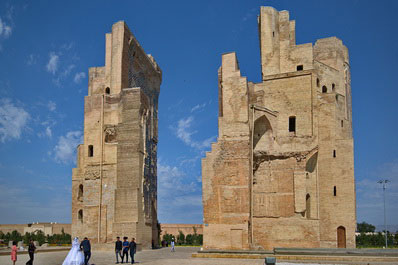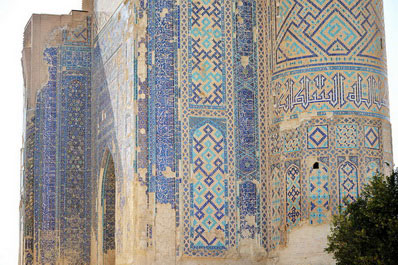Ak-Saray Palace, Shakhrisabz

Ak-Saray Palace in Shakhrisabz is one of the most remarkable architectural monuments from the era of Amir Timur and stands today as a powerful symbol of the Timurid Empire’s grandeur. Although much of the palace lies in ruins, its colossal scale continues to impress. Conceived as Timur’s principal residence, this once-opulent complex astonished contemporaries with its lavish design and monumental scale. Adorned with intricate mosaics, tiles bearing calligraphic inscriptions, and soaring arches, Ak-Saray was a bold statement of imperial ambition. Today, only fragments of its towering walls and elegant minaret-like towers remain - yet even these remnants hint at the scale and brilliance of what was once one of Central Asia’s most magnificent structures.
History
At the turn of the XIV and XV centuries, the city of Shakhrisabz - then known as Kesh - was the birthplace and favored retreat of Amir Timur. After transforming Samarkand, the imperial capital, with majestic mosques and madrasahs, Timur commissioned the construction of a palace that would eclipse even the finest monuments of the empire. Personally overseeing the project, he summoned the most skilled architects and artisans from across his realm. Construction began in 1380 and spanned more than 25 years. The result was one of Central Asia’s most ambitious structures, a vivid reflection of the emperor’s sweeping vision.
Following Timur’s death, Shakhrisabz gradually declined in importance, and the Ak-Saray Palace fell into neglect. Under the Shaybanid dynasty, it was ultimately abandoned, and successive natural disasters hastened its decay. The central arch collapsed more than three centuries ago, marking a turning point in the palace’s deterioration.
Architecture and Decor
Ak-Saray was a masterpiece of medieval urban design. Its central courtyard measured a vast 125 meters in width and 250 meters in length. Among its most ingenious features was a rooftop pool, from which a cascading stream of water animated the palace’s stately façade. This pool was supplied by a lead channel extending from the Takhtakaracha mountain pass - a remarkable feat of hydraulic engineering for its time.
The palace’s façades gleamed with elaborate mosaic panels in shimmering hues of blue, turquoise, and gold. Majestic arches, clad in majolica tiles inscribed with calligraphy, proclaimed the might of Timur and his dynasty. The monumental entrance gates, over 70 meters high, not only welcomed guests into the inner chambers but also served as awe-inspiring symbols of authority. Inside, the palace was no less splendid - with intricately painted walls, gilded ceilings, and carved wooden columns supporting soaring arches.
Significance for Culture and Tourism
Today, Ak-Saray remains a treasured monument and a major draw for visitors from around the world. In 2000, Shakhrisabz was added to the UNESCO World Heritage List, underscoring its cultural and historical importance. The palace stands as a lasting tribute to Timurid architectural brilliance and a poignant reminder of the region’s illustrious past.



